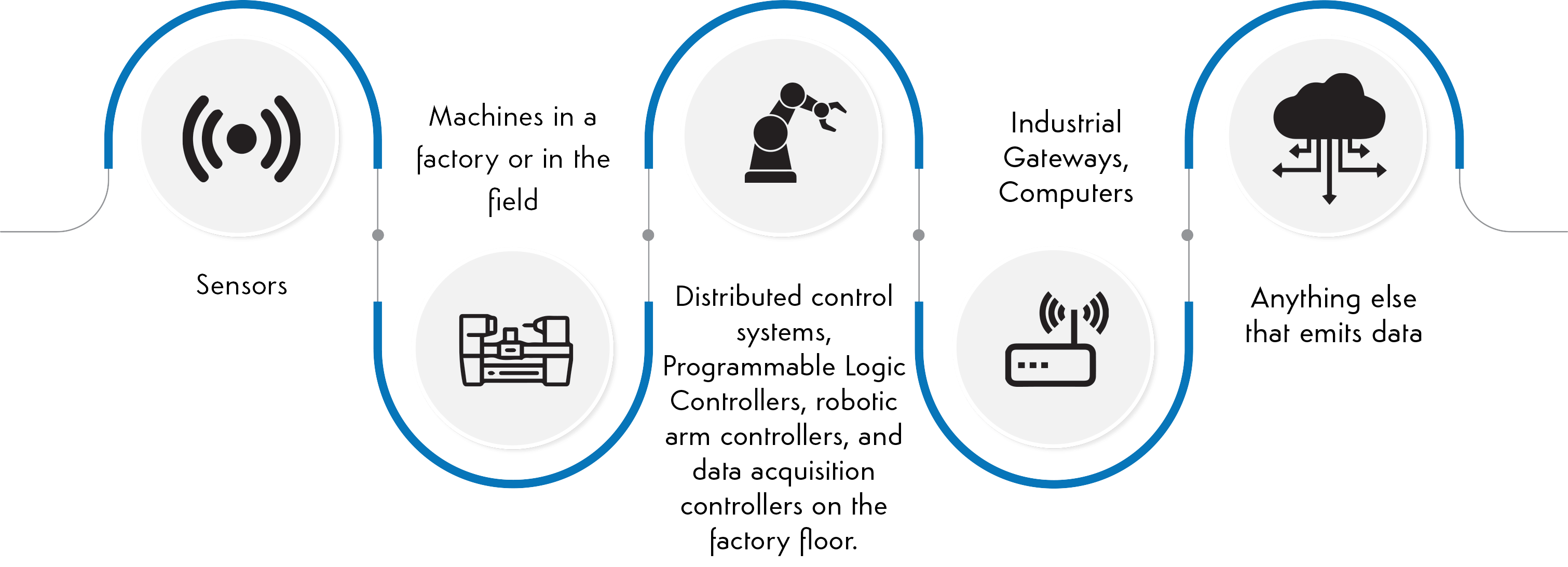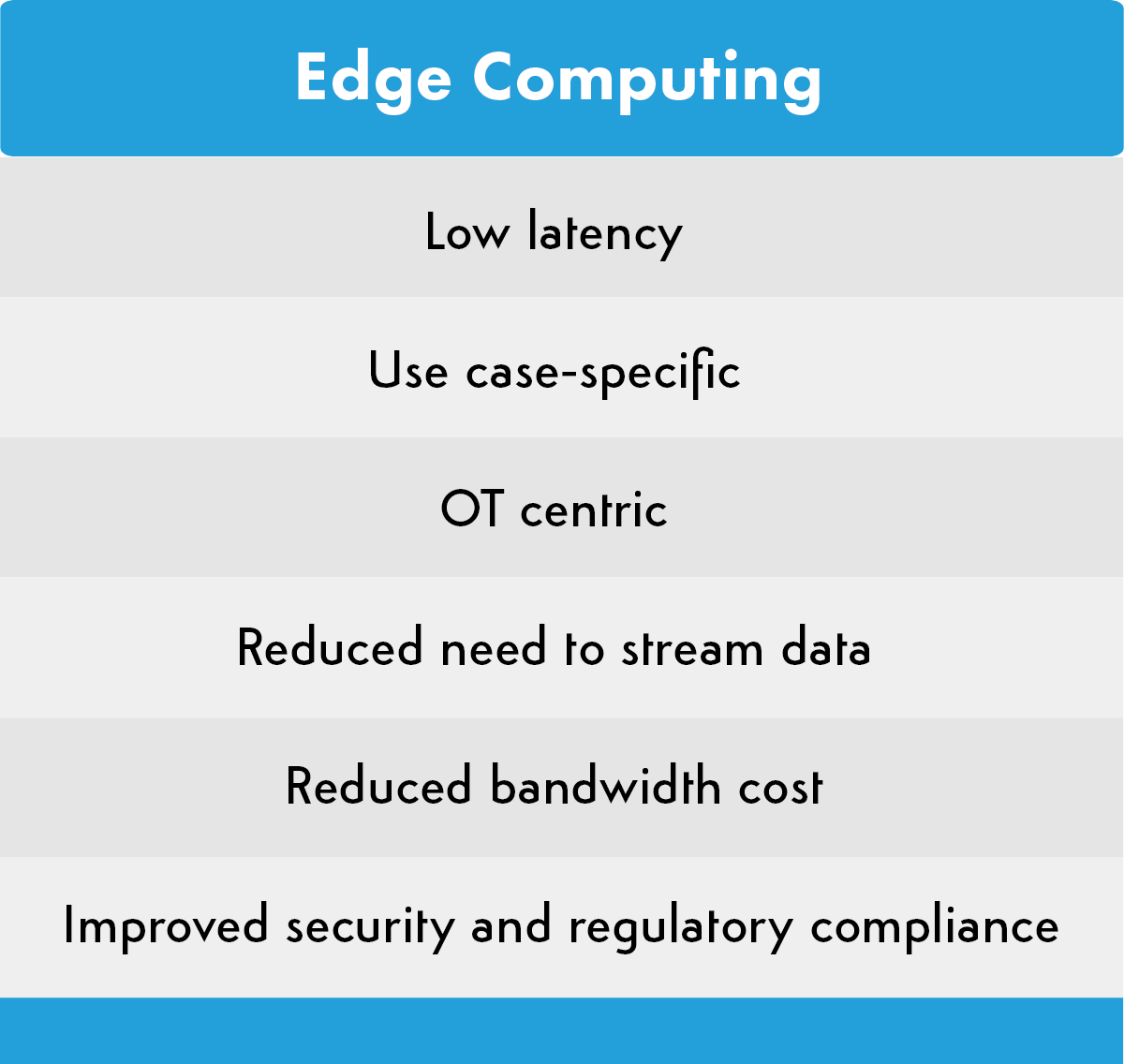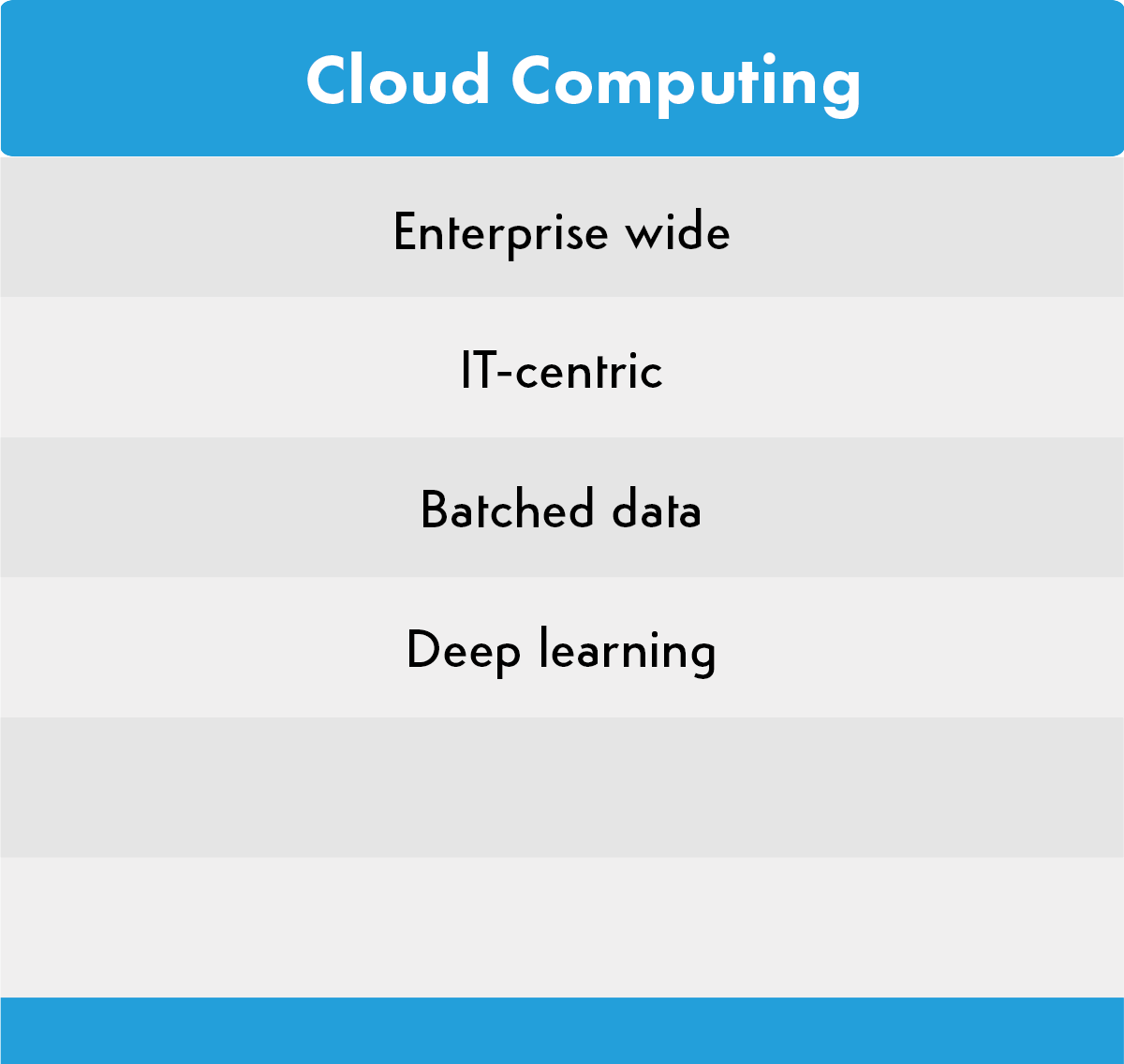Edge Computing
Industrial Edge Computing
Edge computing definition varies by vendors and service providers. A telecom operator might consider the cellular base station as the edge device. For a gateway supplier, the gateway would be the edge device. An Information Technology (IT) networking company might point to routers and switches. An industrial radio networking company might think of remote field devices as their edge computing devices.
Where does real edge intelligence truly reside? When discussing edge intelligence, the edge is more than a “thing.” It is the fabric of networked sensors, machine controllers, and data acquisition units close to the data source being analyzed. This fabric includes a variety of Operational Technology (OT) devices that run on a variety of Operating Systems (OSs), processors, and protocols. They may exist in a factory, water facility, within a building or outside at the oil and gas fields.
You can transform any of the following devices into an intelligent edge device:

Cloud-based IIoT solutions can provide insight from long-term data trends, identifying gaps between benchmark performance and actual performance. However, this is only the start of the digital transformation.
More and more sensors are being installed, due to the increased affordability of sensors as well as technological advancement in sensor technologies, allowing enterprises to collect more data. This opens up a tremendous opportunity to measure and monitor real-time performance gaps between the ideal performance and the actual performance.
Enterprises have more digital use cases, applications, and services built on sensor data. Edge computers connect and integrate these data, transforming them into useful information. Digital transformation can increase efficiency in operations, support predictive maintenance, and improve customer service. However, all of these uses require sensor data and edge computing capabilities.
The challenge of digital transformation is efficient and secure connectivity to sensor data sources in addition to integration with the edge and cloud platform to transform raw sensor data into actionable intelligence near the machine in a real-time sustainable way.
The manufacturing environment demands stringent data security, uninterrupted data flow even with intermittent network for latency-sensitive applications (time it takes for a round-trip query to the cloud and back restricts several outcomes in most industrial environments). Another requirement is a real-time recommendation engine so that the system can act quickly. In the manufacturing environment, machine learning on the edge can reduce the amount of data that needs to be streamed thus allowing faster recommendations to the right person at the right time.
There are several key ways in which intelligent edge computing accelerates the digital transformation journey.

Digital transformation in the manufacturing industry requires processing data close to the source to generate actionable intelligence with low latency. Industrial control applications often require micro-second latencies; this is not currently possible via the cloud. This can only be accomplished through edge computing.


Intelligent edge computing can leverage on board computing resources to reduce the volume of data sent to the cloud. Typically, a large oil refinery generates 1 TB of data each day. An automated manufacturing facility generates 24 TB each day. A mine can generate 1 Petabyte (PB) every day, which is 1024 TB. Moving such a large volume of raw data to the cloud requires extensive amounts of bandwidth. As enterprises add more and more video or audio sensors, these problems will be compounded further. Relying solely on cloud computing increases cloud processing and storage costs. However, a data transformation layer on the edge transforms data, reducing its size. This, in turn, reduces costs associated with cloud computing.
